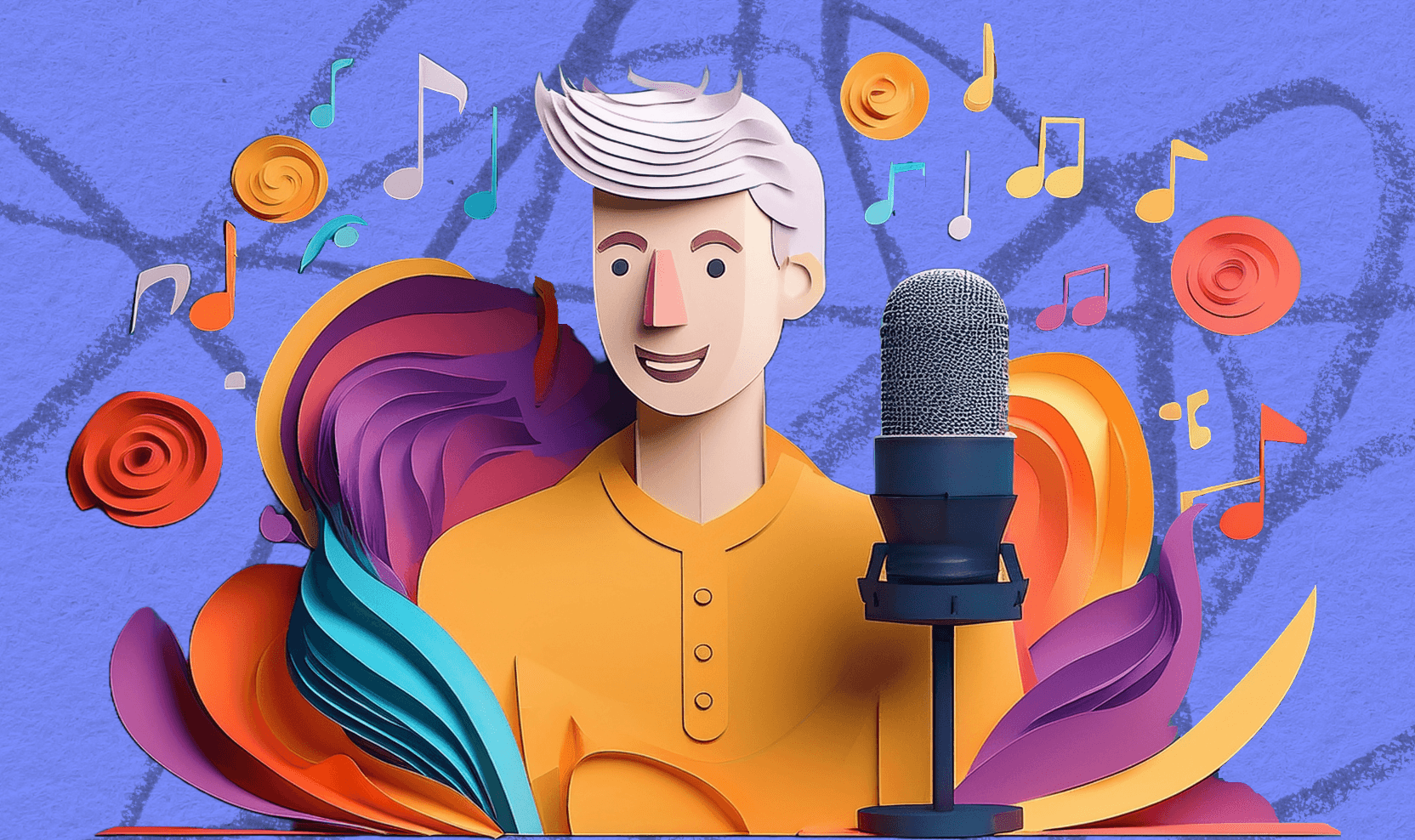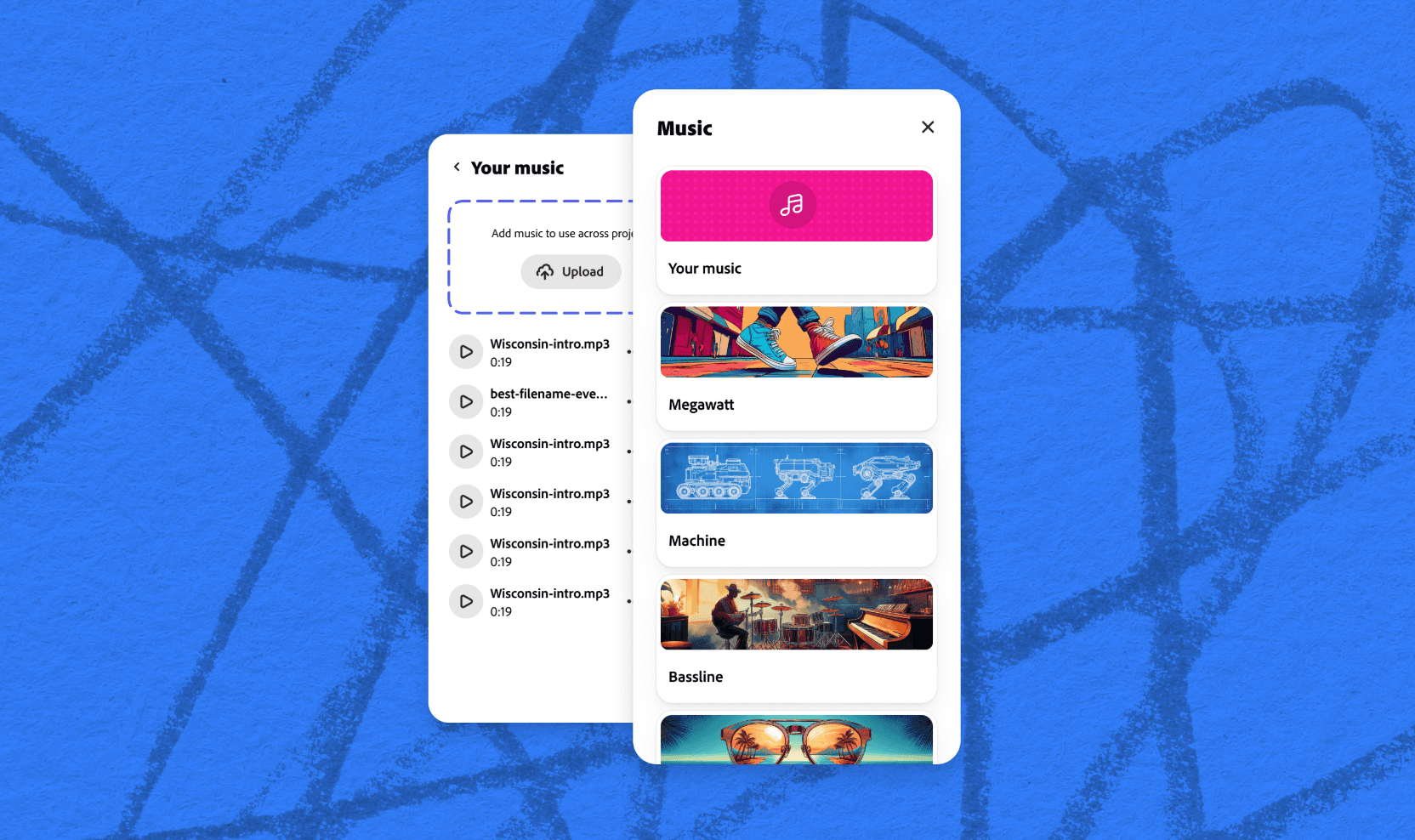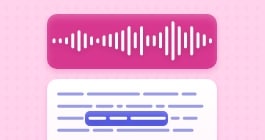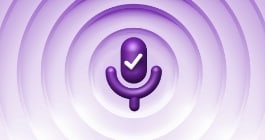Unlock more with the Adobe Podcast Premium plan 
- Video support for MP4, MOV, and more
- Bulk upload files for enhancement
- Adjust strength for a more natural sound
- Enhance up to 4 hours a day, files up to 1 GB
- No download limits on Studio projects
- Download original recordings, speaker-separated
- Customize audiograms and captions with themes
- Upload custom backgrounds for audiograms
- All Premium features for design
Enhance Speech
Studio
Design with Adobe Express Premium
The role of music in podcasts
How much shapes emotion, structure, and connection in your podcast.

Last updated: April 15, 2025
Author: Nick Epson, Voice-first product marketer
Whether you realize it or not, music is a tool constantly used to set tone and emotions in film, tv, and podcasts. It’s undeniably important when it comes to sound design: just try to imagine Jaws without the staccato melody, or Inception without that deep, bombastic chorus. Even more recently, AppleTV’s hit show, Severance, uses music to give clues to the viewers with different tones of elevator dings.
Sound elements like music help structure and texture your podcast. When done right, music adds polish and personality that helps create connections with listeners. Let’s go through some of the key reasons for using music in podcasts.
Why use music in podcasts?
Music, effects, and jingles built into everything from a TV series to appliances affect us all differently. They do everything from draw our attention, alter our mood, or even annoy us, which is why it’s a crucial component of podcasts.
Podcasters across genres rely on music as a key element of their productions. A true crime series like Serial benefits from eerie music to build suspense or a comedy podcast such as My Dad Wrote a Porno uses short, sexy jazz licks for their intros and outros.
Brands and business-focused podcasts also rely on music, for example, Online Marketing Made Easy with Amy Porterfield which features an upbeat, brassy arrangement that plays during the intro and “hook” segments.
Aside from sounding good and helping your brand, there’s a psychological explanation for why music matters. Without going too deep, music triggers neurotransmitter stimulation, releasing chemicals like dopamine to help draw attention and increase engagement. So, even scientifically speaking, consistent music and other sounds allow people to form positive associations with your podcast.
Common ways music is used
We’ve already mentioned a couple of ways music is used in podcasts, but let’s look closer and discuss a few other key roles music and effects have for content.
- A theme song for your intro or outro. Remember when you were a kid, and you’d get pumped when the theme song for your show came on? As adults, it’s much the same—we might not do flying dives onto our parent’s furniture, but it still affects the pleasure centers in our brains and prepares us to enjoy familiar media.
- Transition music breaks up segments and helps listeners prepare to adjust. Some podcasts, such as TED Talks Daily that covers innovation in every imaginable area, use subtle transitions between segments, like after a host’s commentary before an upcoming clip. Transitions help people readjust and provide a hard cue that the show is about to shift.
- Background music is appropriate for some podcasts. Many podcasts don’t use supplemental audio during dialogues or interviews, but for some storytelling-focused content, background or ambient music helps provide texture. There are plenty of good examples that use appropriately themed background music for the kinds of content they publish, like the Serial podcast.
- Use sound effects if it makes sense. Sound effects—even canned applause and laughter prevalent in media decades ago—can improve the experience for the right kind of program. Like background music, effects help flesh out both fiction and non-fiction storytelling. Just be careful to avoid sounding like a local radio jockey who can’t keep hands off their effects board, unless that’s part of your schtick, of course!
The four types of podcast music

For most podcasters, you can easily get started with some royalty-free music. Royalty-free music is a type of license that allows you to use a track without paying ongoing royalties or licensing fees. You just pay once (or access it for free in your editing application) and can use it in your podcast according to the terms of the license.
There’s no need to overwhelm your show with a lot of music. When editing it together, just keep these four types of podcast music in mind:
- Intros: Set the tone, grab attention, and establish your brand in seconds.
- Transitions: Smoothly guide listeners between segments with short musical cues.
- Backgrounds: Subtle, non-distracting music that enhances mood without overpowering dialogue.
- Outros: Wrap up your episode with a strong, memorable closing sound.
If you’re not sure where to start, Adobe Podcast has you covered. Adobe worked with top music composers and editors to create royalty-free music for each of these categories, and it’s built right into the Studio. Music is available in "short (2-8 sec)" and long (10-60 sec)" pieces that anyone can use to get started.
Use music effectively to increase engagement
Like most forms of media today, music plays an important role in how audiences perceive content. It helps set a mood and activates neural pathways that help users sink their teeth into your content.
We’ve made it simple for users to add music and sound effects to their podcasts in our Studio. Not only can you use our text-based editing tool to easily cut and arrange your podcast, adding your own music and sound effects or using music from our royalty-free collections library, curated specifically for spoken content and podcasts.
About the author: Nick brings 15+ years of experience across product development and content marketing, especially in the telecom and VoIP space. He’s passionate about clear messaging, crisp audio, the impact of voice, and building tech that actually connects.



